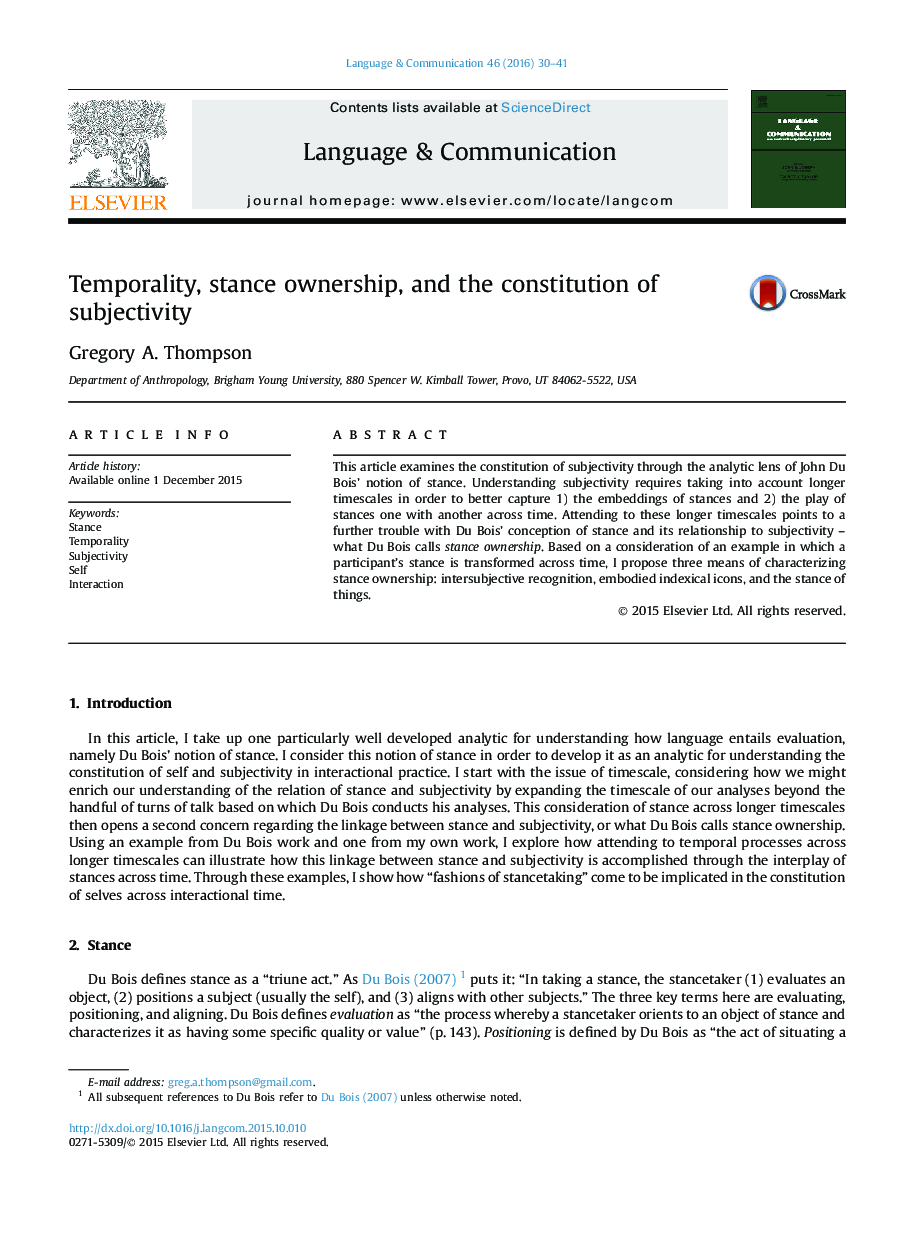| Article ID | Journal | Published Year | Pages | File Type |
|---|---|---|---|---|
| 934862 | Language & Communication | 2016 | 12 Pages |
•I consider Du Bois' notion of stance as a means for understanding subjectivity.•I propose extending the timescale on which we analyze stance.•This offers a better grasp on stance ownership–how stance relates to subjectivity.•Three additions to stance ownership are proposed.•These are: intersubjectivity, iconic indexical embodiment, and the stance of things.
This article examines the constitution of subjectivity through the analytic lens of John Du Bois' notion of stance. Understanding subjectivity requires taking into account longer timescales in order to better capture 1) the embeddings of stances and 2) the play of stances one with another across time. Attending to these longer timescales points to a further trouble with Du Bois' conception of stance and its relationship to subjectivity – what Du Bois calls stance ownership. Based on a consideration of an example in which a participant's stance is transformed across time, I propose three means of characterizing stance ownership: intersubjective recognition, embodied indexical icons, and the stance of things.
